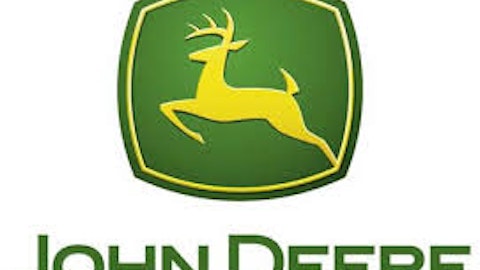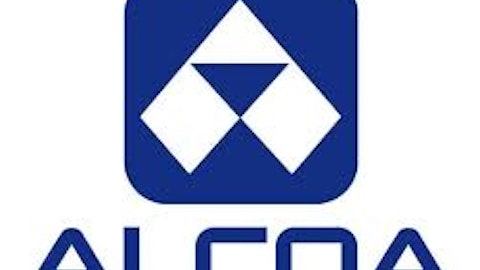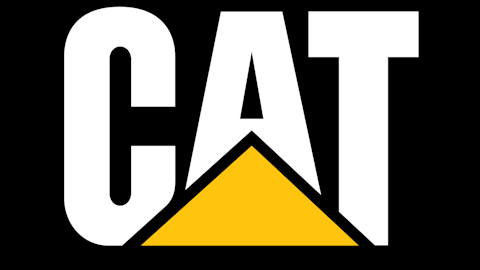Given the dependency of its stock on the global economy, Caterpillar Inc. (NYSE:CAT) is always subject to the occasional stock-price dip and experiences rough headlines almost perpetually. Although it operates in an industry that is subject to constant headwinds, it has weathered a lot of storms over the years. This article provides solid reasons why caterpillar stock values are likely to rise in the near future.
Despite the array of current challenges facing Caterpillar Inc. (NYSE:CAT)’s stock, it is bound to bounce back as indicated by its impeccable track record, thus making it an extremely attractive investment opportunity.
Caterpillar Inc. (NYSE:CAT) is the world’s leading manufacturer of construction and mining equipment, diesel and natural gas engines, industrial gas turbines and diesel-electric locomotives. As the market-share leader in an industry in which size matters, with a line of quality products, an extensive service network and unparalleled brand strength, Caterpillar has several solid competitive advantages.
Current scenario
Caterpillar Inc. (NYSE:CAT) currently earns a return-on-equity of 29.93, while trading at a meager PEG of 0.80. Recent events however suggest that the downside is limited as the company is trading below its enterprise values and has a massive market cap of nearly $46 billion. Historic trends over the decades have shown that Caterpillar’s stock prices tend to rise in the long-term.
With the evident recovery firmly under way, Caterpillar Inc. (NYSE:CAT)’s stock led the Dow higher recently, surging 2.3% following a deal with union workers to freeze their pay for another six years.
The situation is quite similar for its major competitors; agricultural equipment manufacturer Deere & Company (NYSE:DE) is currently down by 2% this year, way behind the overall market. Bad weather lead to earnings misses in the last two quarters of 2012 as farmers found themselves without crops to harvest, thus eliminating the need for equipment.

Japanese giants Kubota and Komatsu seem optimistic about the future; Kubota Corp (ADR) (NYSE:KUB), following the recent decline in the yen’s value, has stepped up its game. It has a 20.4 forward P/E ratio, a 1.41% dividend yield and an EBITDA margin of 12.20%. With over 65% of sales overseas last year, Kubota promises to boost its profit margins by further increasing exports in foreign markets.
Furthermore, a restructuring plan is in effect which should help drive its long-term EPS growth of 12% (annually) till 2017.
Komatsu Ltd (ADR) (OTCMKTS:KMTUY), the world’s second largest manufacturer of mining and construction equipment (with 7.28% return on invested capital) experienced a healthy 4.4% surge in June, validating the Japanese multinational corporation’s previous announcement that annual profits will rise 46% in 2013. Furthermore, Komatsu does not pay dividends, currently has a bit higher valuation than Caterpillar Inc. (NYSE:CAT) and has stated that demand for construction equipment in North America will support earnings.
‘Mine’ for the taking
Like mining companies, the world leading equipment manufacturer has fallen out of favor with the market recently due to worries over China’s slowing growth. However, at its current price the company is trading way below its enterprise value; 63% below its indicative enterprise price to be exact. Today, Caterpillar Inc. (NYSE:CAT)’s stock presents a great opportunity for investors seeking valuable, defensive stocks and dividend income.
Though it is true that the company is facing several real challenges in the face of the recent recession, such as a delay in infrastructure and capital projects (the company’s primary source of income), with the acquisition of Bucyrus, Caterpillar has shifted its focus to mining in the past few years.
Caterpillar Inc. (NYSE:CAT) has undeniably been in a problematic situation for quite some time; while various sectors of the economy have significantly recovered since the recession, the world’s largest heavy-equipment maker has been suffering from a weakening global mining industry and delayed infrastructure spending. This doesn’t come as much of a surprise though as Caterpillar altered its long term outlook a year ago in anticipation of a weakening mining market.
All this has led to caterpillar’s stock being valued at a much lower price than the company’s actual worth. The company is expecting significant growth over the next two years, so buying at these (practically dirt-cheap) value prices might be the best possible investment.
Although mining made up about a third of Caterpillar Inc. (NYSE:CAT)’s sales in 2012, sales are expected to fall up to 50% in 2013 owing to the lower commodity prices that have led miners to reduce capital spending. Despite these challenges, Caterpillar prices have gotten a little too cheap. Power generation, construction and mining equipment are essential contributors to economic growth and improvement in standards of living worldwide, so stock prices are bound to pick up sooner or later.
Nowhere to go but up!
Caterpillar Inc. (NYSE:CAT) is also not too happy as dealers seek to reduce their inventories (dealers shed $700 million in equipment inventory in the first quarter of 2013). However, when growth eventually resumes (which it most definitely will), these dealers are bound to rebuild their inventories. As it enjoys the position of world leader in quality and innovative branded equipment, Caterpillar’s North American market is rather secure and expansionary operations in Europe and East Asia are already underway. Caterpillar’s stock is sure to soar once global development and infrastructure-building eventually resume. For a company with a historical price-to-earnings ratio near 20, buying in at under 9 would be a ‘positively genius’ investment move.
A robust reputation
Furthermore, the company has proven to be remarkably resilient in the face of the harshest challenges; surviving some of the worst recessions in its 88 year history, reporting a total of only 16 annual losses (most of which were during the Great Depression). Even in the 2008 depression, Caterpillar Inc. (NYSE:CAT)’s stock remained profitable and actually outperformed S&P 500. The underlying success strategy was tactful cost-cutting in the areas of R&D and capital expenditures, and caterpillar has again made preparations for cutbacks in case of an economic downturn. Caterpillar has prepared itself to remain profitable even if sales were to fall by 40%; truly representing a stock that can help investors though another recession.
Caterpillar Inc. (NYSE:CAT) is reputed for its legendary dedication to preserving and growing the dividend payout, regardless of share price. Its poor current stock performance has pushed up the yield on dividend to 3%. CEO Doug Oberhelman has assured modest dividend growth, promising to never ever cut dividends. For the past thirty years, Caterpillar has raised its dividend by an average of more than 13% annually. Just this month, even in the face of declining sales in 2013, Caterpillar increased its dividend by 15%. For investors seeking stable, growing income, it would be extremely unwise to pass by Caterpillar’s stock.
Abbey Monnin has no position in any stocks mentioned. The Motley Fool has no position in any of the stocks mentioned.
The article Caterpillar: Bound to Blossom originally appeared on Fool.com.
Copyright © 1995 – 2013 The Motley Fool, LLC. All rights reserved. The Motley Fool has a disclosure policy.






